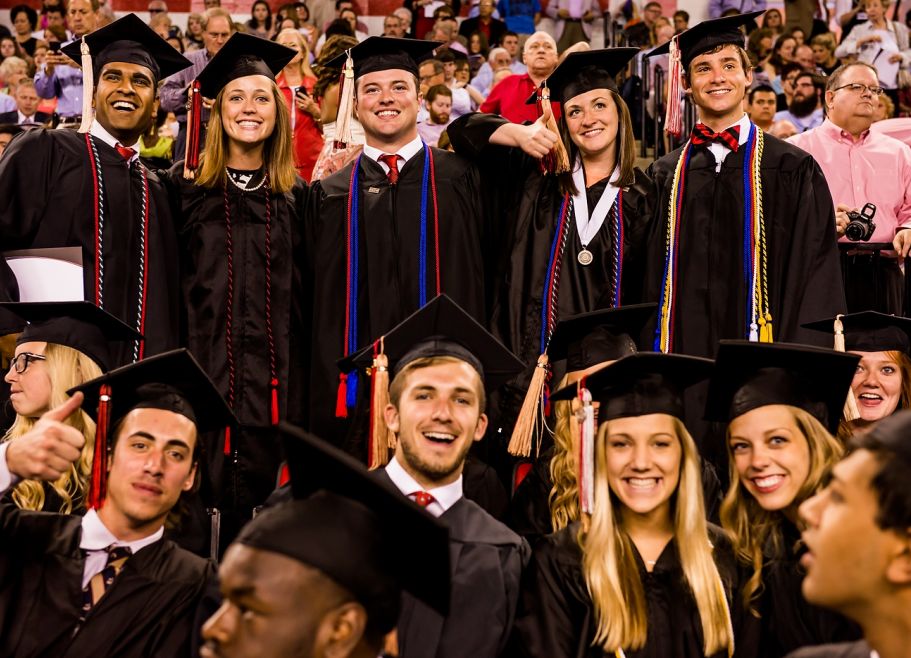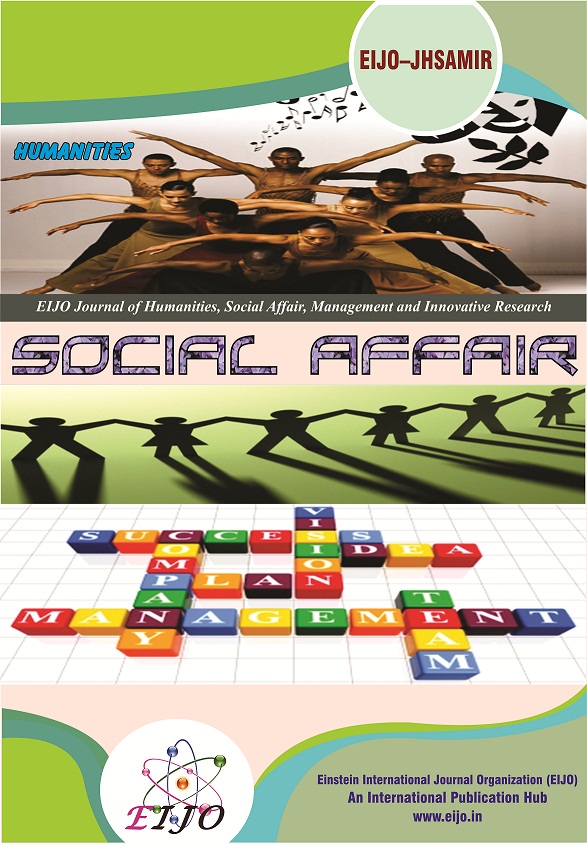JOURNALS || EIJO Journal of Humanities, Social Affair, Management and Innovative Research (EIJO – JHSAMIR) [ ISSN : 2455 - 927X ]
Abstract
The present paper shares the experiences of an initiative taken towards developing skills among Visually Challenged Students through our intellectual traditions of Vedic Mathematics. Visually Challenged are a potential Human Resource. It is time to look at them in that light. Our perspective needs to shift from merely providing for them to investing in them. There is an urgent need for investing and upgrading the education that the blind child receives. These blind children need to grow up with dreams and desires to be part of the mainstream rather than to be reconciled to a reserved position in the Public Sector. In visually impaired children, this exercise could start with the learning of the rich treasure of Vedic Mathematics. The findings indicate that instructional strategies based on Vedic Mathematics Mental Computation for blind children can help to support and develop their intellectual capabilities, thus helping to close the gap between sighted and blind children.
Keywords: Vedic Mathematics, Mental Computation, Visually Challenged.
[1]. Australian Education Council (1991). A national statement on mathematics for Australian schools. Melbourne: Curriculum Corporation.
[2]. Barnett, J. H. (1998). A brief history of algorithms in mathematics. In L. J. Morrow & M. J. Kenney (Eds) The teaching and learning of algorithms in school mathematics (pp. 69–77). Reston: National Council of Teachers of Mathematics.
[3]. Bauman, M. K. & Kropf, C. A. (Sum 1979) Psychological tests used with blind and visually handicapped persons. School Psychology Review. Vol 8(3). 257-270.
[4]. Case, R. & Sowder, J. T. (1990). The development of computational estimation: A neo-Piagetian analysis. Cognition and Instruction 7(2), 79–104.
[5]. Cutsforth, T.D. (1951). The Blind in School and Society: A Psychological Study. In Agrawal S. (2004) Teaching Mathematics to Blind Students through Programmed Learning Strategies. Abhijeet Publications. Delhi.
[6]. Dossey, J. A., Mullis, I. V. S., Lindquist, M. M., & Chambers, D. L. (1988). The mathematics report card. Are we measuring up? Trends and achievement based on the 1986 national assessment. Princeton, NJ: Educational Testing Service.
[7]. Ercikan, K., McCreith, T., & Lapointe, V. (2005). Factors associated with mathematics achievement and participation in advanced mathematics courses: An examination of gender differences from an international perspective. School Science and Mathematics, 105(1), 5-14.
[8].
Gladstone, R., Deal, R., & Drevdahl, J.E (1960). Attitude towards mathematics. In M.E. shaw& J.M. wright (1967). Scales for the measurement of attitudes. NY: McGraw Hill.
[9]. Guimaraest, H. M. (2005) Teachers and students views and attitude towards new mathematics curriculum”. Journal of Educational Studies in Mathematics 26, 347-365.
[10]. Haladyna, T., Shaughnessy, J., and Shaughnessy, J. M. (1983). A causal analysis of attitude toward mathematics. Journal for Research in Mathematics Education, 14(1), 19-29.
[11]. Kapperman, G., & Sticken, Jodi. (2003). A Case for Increased Training in the Nemeth Code of Braille Mathematics for Teachers of Students Who Are Visually Impaired. Journal of Visual Impairment & Blindness, 97(2), 110-112.
[12]. Lowenfeld, B. (1973). History of the Education of Visually Handicapped Children. In B. Lowenfeld (Ed.), The Visually Handicapped Child in School (pp. 1-25). John Day Co. New York.
[13]. Maple, S. A., and Stage, F. K. (1991). Influences on the choice of math/science major by gender and ethnicity. American Educational Research Journal, 28(1), 37-60.
[14]. Ministry of Human Resource Development (GOI) (1986) National Policy on Education, 1986. New Delhi.
[15]. MILOLOZA? , M. (2008), Vedska matematika, Osjecki matemati ? cki list, 8, 19–28.
[16]. McIntosh, A. (1998). Mental Computation: Research aimed at classroom change. In A. McIntosh, & N. Ellerton (Eds) Research in mathematics education: A contemporary perspective. Perth: Mathematics, Science and Technology Education Centre Edith Cowan University.
[17]. National Council of Teachers of Mathematics. (1989). Curriculum and evaluation standards for school mathematics. Reston: National Council of Teachers of Mathematics.
[18]. NCERT. (2005) National Curriculum Framework for School Education 2005. Author, New Delhi.
[19]. Puri, N. (1986). PushpÐ1. Roorkee, India: University of Roorkee Press. Available through Vedic Mathematics Research Group, Roorkee University, Roorkee 247 667, India.
[20]. Plunkett, S. (1979). Decomposition and all that rot. Mathematics in School 8 (3), 2–5.
[21]. Reys. B. J. & Barger, R. S. (1994). Mental computation: Issues from a United States perspective. In R. E. Reys & N.Nohda (Eds) Computational alternatives for the twenty-first century: Cross-cultural perspectives from Japan and the United States (pp. 31–47).
[22]. Reston: National Council of Teachers of Mathematics. Sowder, J. T. (1992). Making sense of number in school mathematics. In G. Leinhardt, R. Putnam & R. Hattrup (Eds) Analysis of arithmetic for mathematics (pp. 1–51). Hillsdale NJ: Lawrence Erlbaum.
[23]. Raja Ram Mohan Roy.( 1999). Vedic Physics: Scientific Origin of Hinduism, with a Foreword by Subhash Kak, Toronto, Canada: Golden Egg Publishing.
[24]. Richards, L. (1994). The Value of abacus. Paper presented at the International Symposium on Abacus Theory. Huang Shan, China.
[25]. Quoted in V. Raghavan, Presidential Address, Technical Sciences and Fine Arts Section, XXIst AIOC, New Delhi, 1961.
[26]. Saha, S. (2007) A study of Gender Attitude to Mathematics, Cognitive style and Achievement in mathematics”. Experiments in Education 35, 6.
[27]. Seegers, G., & Boekaerts, M. (1996). Gender-related differences in selfreferenced cognitions in relation to mathematics. Journal for Research in Mathematics Education, 27, 215-240.
[28]. Strutchens, M. E., Lubienski, S. T., McGraw, R., and Westbrook, S. K. (2004). NAEP findings regarding race and ethnicity: Students' performance, school experiences, attitudes and beliefs, and family influences. In P. Kloosterman and F. K. Lester, Jr. (Eds.), Results and interpretations of the 1990 through 2000 mathematics assessments of the National Assessment of Educational Progress (pp. 269-304). Reston, VA: National Council of Teachers of Mathematics.
[29]. Trusty, J. (2002). Effects of high school course-taking and other variables on choices of science and mathematics college majors. Journal of Counseling and Development, 80(4), 464-474.
[30]. Thomas (2006) The effects on student’s achievements and attitudes using integrated learning systems with co-operative pairs. Journal Educational Technology Research and Development 45, 51-64.
[31]. Threadgill-Sowder, J. T. (1988). Mental computation and number comparison: Their roles in the development of number sense and computational estimation. In J. Hiebert & M. Behr (Eds) Number concepts and operations in the middle grades (pp. 182–197). Hillsdale NJ: Lawrence Erlbaum & National Council of Teachers of Mathematics.
[32]. Tirtha, S.B.K. (1965). Vedic mathematics. Delhi, India: Motilal Banarsidass.
[33]. Xin Ma and Jiangmin Xu (2004) Determining the causal ordering between attitude towards Mathematics and achievement in Mathematics. American Journal of Education110, 256-280.
[34]. www.ozemail.com.au/~gmorgan/mc_ref



